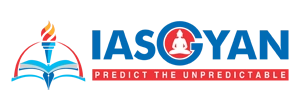



U.S., Saudi at bottom of climate class: report
The U.S. and Saudi Arabia are among the major polluters showing hardly any signs of reducing their greenhouse gas production, a global assessment of countries’ emissions trajectories said at United Nations climate talks.
- Measures the emissions, renewable energy share, energy use and climate policies of 57 countries and the European Union.
- India, for the first time, ranks among the top 10 in this year’s Climate Change Performance Index (CCPI).
- The current levels of per capita emissions and energy use in India, ranked 9th in the “high category”, are still comparatively low and along with ambitious 2030 targets, result in high ratings for the greenhouse gas emissions and energy use categories, said the report.
- It is an instrument designed by the German environmental and development organisation German watch.
- It seeks to enhance transparency in international climate politics.
- The Climate Change Performance Index was first published in 2005 and an updated version is presented at the UN Climate Change Conference annually.
In a shock for online platforms like Google, the Supreme Court has held that internet intermediaries cannot be protected from criminal defamation cases registered against them prior to October 27, 2009.
- Parliament amended the Information Technology Act of 2000 in 2009 to protect online intermediaries from liability for criminally defamatory content published in them by third parties.
- The amended Section 79 of the 2000 Act provided that “an intermediary shall not be liable for any third party information, data, or communication link made available or hosted by him.”
- The amendment gave almost blanket protection to intermediaries from legal action under Section 499/500 (criminal defamation) of the Indian Penal Code.
- In the recent judgement, it was held that Section 79 of the Act, prior to its substitution, did not protect an intermediary concerning the offence under Section 499/500 of the IPC.
More than four years after the historic Land Boundary Agreement (LBA) between India and Bangladesh, a report released by civil rights organisations on the situation in erstwhile enclave’s states that protest and resistance have become an essential part of life in enclaves in India.
- 100th Amendment to the Indian Constitution was made for Indo-Bangladesh Land Boundary Agreement (LBA) that provided for the exchange of enclaves between the two countries.
- It necessitated the development and integration of Bangladeshi enclaves in India and addressing issues of rehabilitation of returnees from Indian enclaves in Bangladesh.
- The historic agreement facilitated the transfer of 111 enclaves, adding up to 17,160.63 acres from India to Bangladesh.
- There is agreement amongst scholars and analysts that the LBA does not denote a complete break with the pre-LBA situation.
- The spotlight has now shifted to issues of poor governance, as well as conflict of interest between the Centre and the state in the post-LBA years.
- They are yet to get land records and nothing has been done for providing them employment.
- A comprehensive survey should be undertaken to identify and assimilate the people whose names have been left out of the headcount previously.
- All the benefits of being a citizen in India should be extended to them.
- NAVARMS is the only international seminar and exhibition on naval weapon systems conducted in India to invite all the stakeholders in life cycle management of naval weapons and provide a common platform to share their views and concerns.
- The theme for this year’s exhibition is “Make in India – Fight Category: Opportunities and Imperatives”.
- The 2-day event will provide an opportunity for the exchange of ideas, create awareness and identify emerging prospects for Indian/International defence industry in the domain of naval weapon systems.
The Lok Sabha passed the Constitution (One Hundred and Twenty-Sixth Amendment) Bill, 2019, which continues the reservation of seats for the Scheduled Castes and Scheduled Tribes for another 10 years, until January 25, 2030.
- Government didn’t bring amendment for continuation of nomination of Anglo-Indians.
Constitution:
- Provisions for reservations for SCs/STs and Anglo- Indians are extended under Article 334 (a) and (b) of the Constitution.
- Two members of the Anglo Indian community have been nominated in the Lok Sabha since the adoption of the Constitution, under article 334(b).
In a judicial order, the Supreme Court has said that two hundred and thirteen names recommended for appointment to various High Courts are pending with the government/Supreme Court Collegium.
- The names on which the Supreme Court Collegium, the High Courts and the governments had agreed upon should be appointed within six months.
- The appointments required a continuous, collaborative and integrated process, where the government is an important consultee.
- The number of judges appointed to the High Courts has steadily dipped since 2017.
- On the Supreme Court collegiums clearing the recommendees, the Union Law Ministry has to put up within three weeks the recommendations to the Prime Minister who would advise the President on the appointment.
- However, no time limit has been prescribed for action by the Prime Minister and the President.
Aureofungin, Kasugamycin, Validamycin and Streptomycin+ Tetracycline combination are antibiotics that are registered under the Insecticide Act 1968 for use as pesticides to combat certain fungal and bacterial diseases in plants.
- Pesticides are toxic substances but they do not pose any adverse effect on human beings, animals and the environment if they are used as per the label and leaflet approved by the Registration Committee.
- The CIBRC is the country’s apex body that approves the use of pesticides.
- The use of pesticides and insecticides in India are regulated by the following two:
- Insecticides Act, 1968
- Insecticides Rules, 1971
- In the Act and the Rules framed under it, compulsory registration of the pesticides at the Central level and licence for their manufacture; formulation and sale are dealt with at the State level is required.
- The CIBRC functions under the Department of Agriculture, Ministry of Agriculture and Farmers’ Welfare.
The Department of Agriculture, Cooperation and Farmers’ Welfare has constituted a Task Force to develop a comprehensive Farmers’ Database for better planning, monitoring, strategy formulation and smooth implementation of schemes for the entire country.
- The Government is developing a ‘Gandhi Encyclopaedia’ to spread awareness in the society.
- The Ministry of Culture has approved a project for the development of ‘Gandhi Paedia’ by the National Council of Science Museums, Kolkata for the promotion of appropriate Gandhian philosophy and thoughts through social media platforms under the 150th birth anniversary of Mahatma Gandhi commemoration.
In order to promote adoption of electric vehicles, Department of Heavy Industry formulated a scheme namely FAME-India Scheme [Faster Adoption and Manufacturing of (Hybrid &) Electric Vehicles in India] in 2015.
- GST on EVS is reduced from existing 12% rate to 5% as against the 28% GST rate with cess up to 22% for conventional vehicles.
- Ministry of Power has allowed sale of electricity as ‘service’ for charging of electric vehicles. This will provide a huge incentive to attract investments into charging infrastructure.
- Granted exemption to the battery operated transport vehicles and transport vehicles running on ethanol and methanol fuels from the requirements of permit.
- Exemption of registration fees for battery operated/electric vehicles to promote the use of eco-friendly vehicles in the country.
- Additional income tax deduction of Rs 1.5 lakh on the interest paid on loans taken to purchase electric vehicles.
- Allowed the age group of 16-18 years to obtain driving licence to drive E-scooters.
A Central Sector Scheme namely ‘Rashtriya Vayoshri Yojana’ (RVY) is being implemented by the Department of Social Justice and Empowerment with an objective to provide to senior citizens, belonging to the BPL category and suffering from age-related disabilities/infirmities, with such physical aids and assisted living devices which can restore near normalcy in their bodily functions. Objective:
- An Indian citizen of any age.
- Holds a 40% Disablement Certificate.
- Has monthly income from all sources not exceeding Rs. 20,000/- per month.
- In case of dependents, the income of parents/guardians should not exceed Rs. 20,000/- per month.
- Who have not received assistance during the last 3 years for the same purpose from any source. However, for children below 12 years of age, this limit would be one year.
National Survey to collect State wise Data on Extent and Pattern of Substance Use was conducted in the country during the year 2018.
- The National Crime Record Bureau under the Ministry of Home Affairs has informed that a total number of 874, 750 and 778 people have died during 2014, 2015 and 2016 respectively due to drug overdose in the country.
- The national survey was conducted to generate estimates for eight categories of psychoactive substances: Alcohol, Cannabis, Opioids, Cocaine, Amphetamine Type Stimulants (ATS), Sedatives, Inhalants and Hallucinogens.
- Alcohol is the most common psychoactive substance used by Indians.
- After alcohol, cannabis and opioids are the next commonly used substances in India.
The Ministry of Social Justice and Empowerment has formulated and is implementing a National Action Plan for Drug Demand Reduction (NAPDDR) for 2018-2025.
- The Plan aims at the reduction of adverse consequences of drug abuse through a multi-pronged strategy.
- Awareness generation programmes in schools/colleges/Universities
- Community-based peer led interactions intervention programmes for vulnerable adolescent and youth in the community.
- Provisioning of treatment facilities and capacity building of service providers.
- Financial assistance is provided to eligible Non-Governmental Organizations based on the recommendations of State Governments/UT Administrations for running Integrated Rehabilitation Centres for Addicts to provide composite/integrated services for the rehabilitation of addicts including adolescents.

© 2025 iasgyan. All right reserved